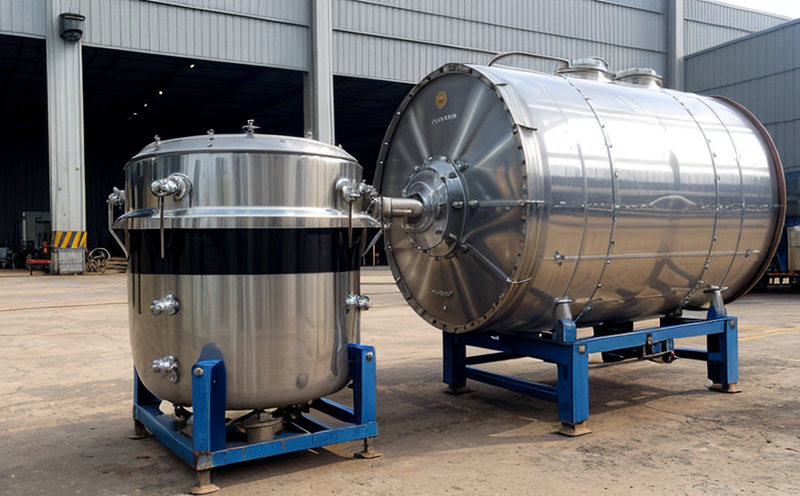Steam drum inspection
The steam drum is a critical component of boiler systems, serving as a pressure vessel that holds water and generates steam. This component plays a vital role in the overall efficiency and safety of power plants, industrial boilers, and other applications where high-pressure steam is required. Regular inspections are essential to ensure the integrity and reliability of these vessels, preventing potential failures that could lead to severe accidents or significant downtime.
The inspection process involves several key steps, including visual examination, hydrostatic testing, ultrasonic testing, and radiographic testing. Each method provides critical insights into the condition of the steam drum:
- Visual Examination: This initial step allows technicians to inspect the external surfaces for visible signs of corrosion or damage.
- Hydrostatic Testing: The vessel is filled with water and pressurized to its maximum working pressure. Any leakage or deformation indicates potential weaknesses.
- Ultrasonic Testing: This non-destructive testing method uses sound waves to detect internal defects such as cracks, porosity, and inclusions.
- Radiographic Testing: High-energy X-rays are used to identify structural flaws within the vessel walls.
These inspections must adhere to strict international standards such as ASME (American Society of Mechanical Engineers) codes. Compliance with these standards ensures that the inspection process meets industry best practices and guarantees safety for end-users.
The steam drum serves as a reservoir for water, which is heated by an external heat source into steam. The design must withstand high pressures while maintaining structural integrity. Therefore, thorough inspections are necessary to detect any signs of wear or damage that could compromise the vessel's performance and safety.
Regular inspection schedules should be established based on the age and usage of the boiler system. Early detection of potential issues can prevent costly repairs and ensure continuous operation without compromising safety standards.
Why It Matters
The steam drum is a critical component that holds water, generates steam, and plays a key role in maintaining the overall efficiency and safety of boiler systems. The integrity and reliability of these vessels are crucial to prevent potential failures that could lead to severe accidents or significant downtime.
Regular inspections are essential for several reasons:
- Safety: Detecting and addressing potential defects before they cause a failure can prevent catastrophic incidents.
- Cost-effectiveness: Preventive maintenance reduces the risk of sudden failures, minimizing repair costs and downtime.
- Regulatory Compliance: Adhering to industry standards ensures compliance with legal requirements and protects against potential liabilities.
- Operational Efficiency: Reliable steam drum performance contributes to optimal boiler operation and efficiency.
The consequences of neglecting regular inspections can be severe. A failure in the steam drum could result in a sudden release of pressurized steam, leading to injuries or fatalities. Additionally, such incidents may disrupt operations, causing significant financial losses due to downtime and potential legal liabilities.
By maintaining high standards for inspection processes, operators ensure that they are meeting regulatory requirements and industry best practices. This approach not only enhances safety but also fosters a culture of continuous improvement in operational excellence.
Benefits
The benefits of regular steam drum inspections extend beyond mere compliance with regulations; they offer significant advantages for operators, end-users, and the broader community. By adhering to strict inspection protocols, organizations can:
- Enhance Safety: Detect and address potential issues before they escalate into serious incidents.
- Maintain Operational Efficiency: Ensure uninterrupted boiler operations without compromising performance or safety standards.
- Extend Asset Life: Prevent premature wear and tear, extending the lifespan of critical components such as the steam drum.
- Reduce Downtime: Minimize unplanned maintenance by identifying issues early in their development cycle.
- Safeguard Reputation: Demonstrate a commitment to quality and safety, enhancing trust with stakeholders and regulatory bodies.
- Comply with Industry Standards: Ensure that all inspections meet or exceed the requirements set forth by ASME codes.
- Promote Continuous Improvement: Encourage a proactive approach to maintenance and operational excellence.
Implementing these practices not only protects the integrity of critical components like steam drums but also contributes to a safer, more efficient, and sustainable operation. By prioritizing regular inspections, organizations can mitigate risks and optimize performance across their entire boiler system.
International Acceptance and Recognition
The steam drum inspection process is widely recognized and accepted globally for ensuring the safety and reliability of pressure vessels in power plants and industrial settings. Compliance with ASME codes, particularly Section I and Section VIII Division 1 & 2, is a hallmark of best practices.
- ASME Section I: Governs the construction and installation of boilers and pressure vessels. It ensures that all components meet strict safety standards.
- ASME Section VIII Division 1: Focuses on the design, fabrication, and inspection of high-pressure vessels like steam drums. This division is widely recognized for its stringent requirements in ensuring structural integrity.
- ASME Section VIII Division 2: Covers the design and construction of power boilers. It ensures that all boiler systems comply with rigorous safety standards.
The use of ASME codes promotes consistency across different regions, fostering international acceptance and recognition. Many countries recognize these standards as benchmarks for quality and safety in pressure vessel applications. This global endorsement enhances trust between manufacturers, operators, and regulatory bodies.
By adhering to these internationally recognized standards, organizations demonstrate their commitment to maintaining high-quality practices that are universally accepted. This consistency ensures that steam drum inspections are conducted with the highest levels of accuracy and precision, regardless of geographical location or operational context.





